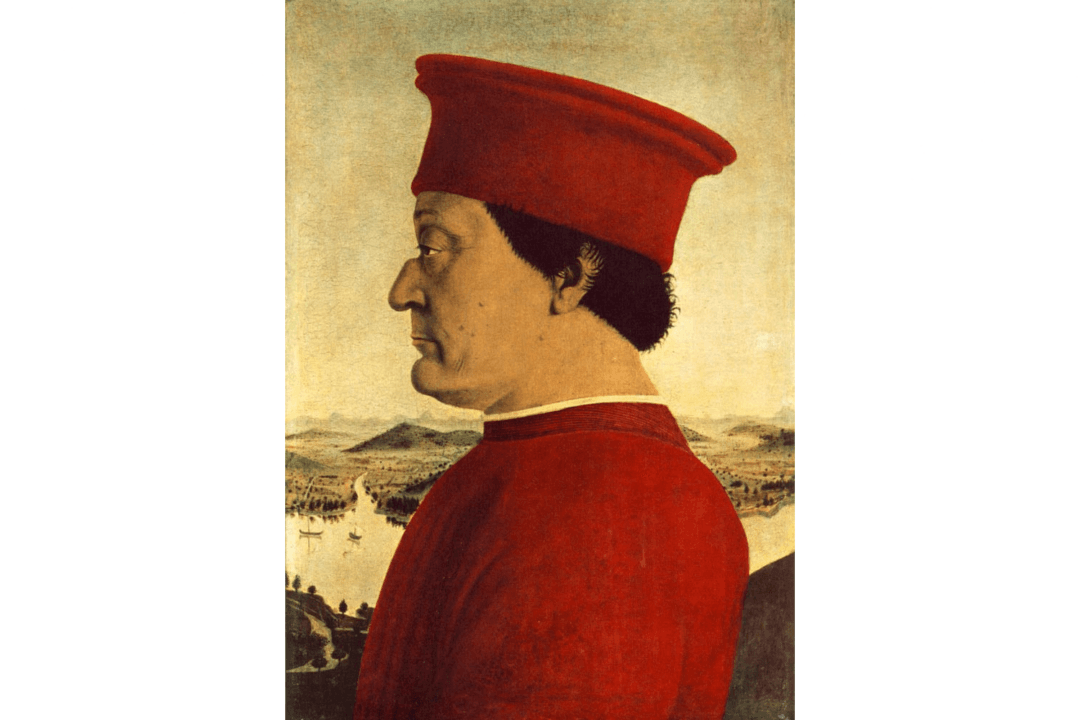You can’t un-see it: the broken nose. Even in the skilled hands of artist Piero della Francesca (circa 1415–1492), the deep indent at the bridge seems not quite normal. Yet the obvious physical defect in a formal portrait might be seen as a badge of honor for a cultured aristocrat who improved the lives of his people.
The Duke of Urbino, Federico da Montefeltro, built a fortune as a condottieri, or captain of a mercenary army of knights, to fight for various warring cities and states. As both a military and civic leader, he inspired loyalty and devotion from his subjects.






